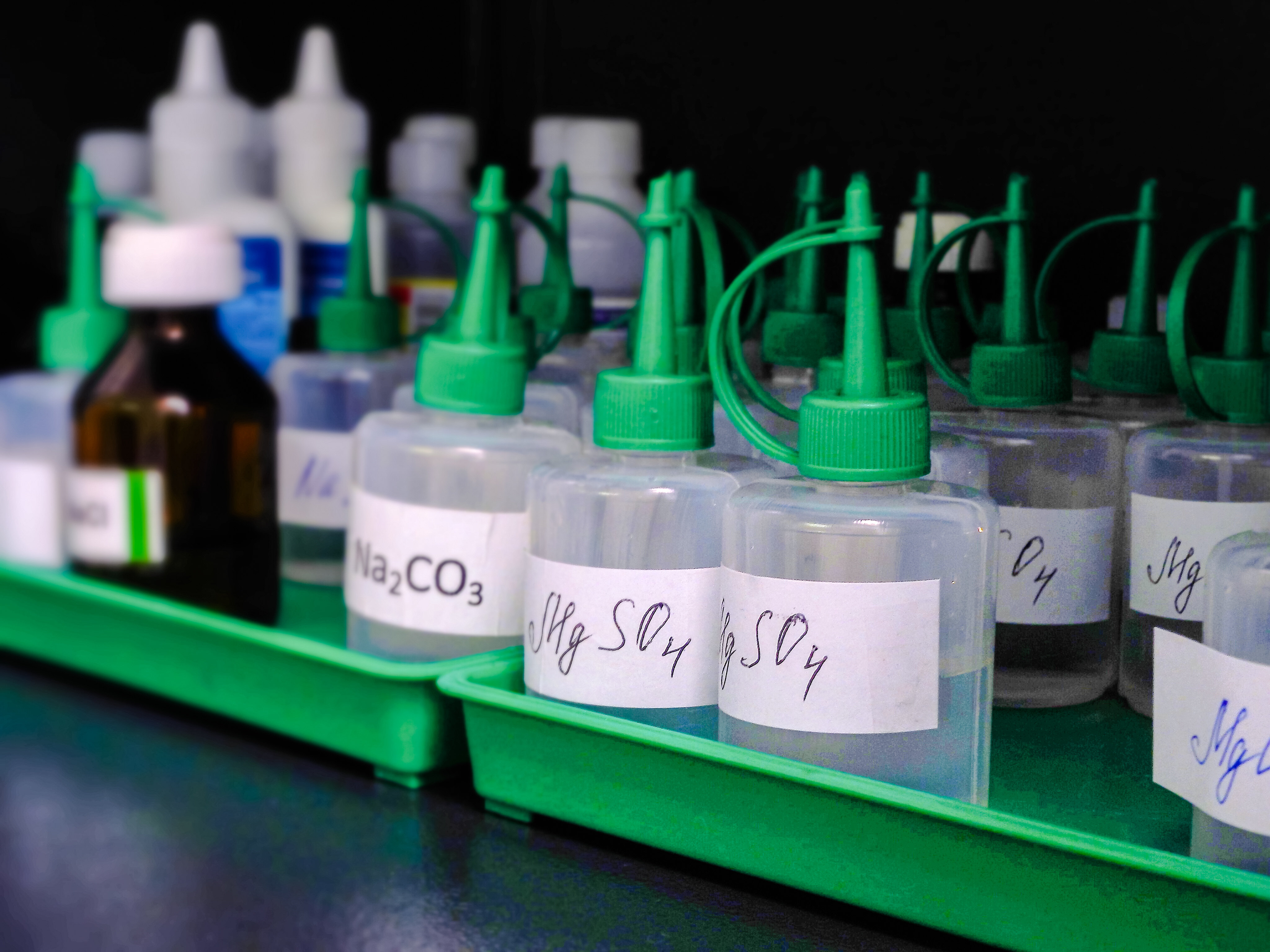How To Find Molarity With Moles And Volume
How to Summate Molarity & Molarity Formula
Core Concepts
In this tutorial, y'all will learn the molarity formula, and how to calculate the molarity of a solution using the molarity equation. If y'all enjoy this article, brand sure to check out other resources linked beneath!
Topics Covered in Other Articles
- Computing Molar Mass
- Mixtures vs. Compounds
- Molecule vs. Chemical compound
- What is a Mole?
Vocabulary
- Molarity (K): otherwise known as the tooth concentration of a solution, molarity is the moles of solute per liters of solution. Molarity tin be expressed as the abbreviations mol/Fifty, or more popularly, M.
- Molar mass: the sum of the atomic weights that brand upwards a molecule. For an element, it is the same value as the atomic weight displayed in the periodic table.
- Solute: the substance in a solution that is dissolved by the solvent. It is e'er the smaller component in the solution. In chemistry, the solute is the element or molecule in the solution.
- Solvent: the substance that dissolves the solute. This is what makes up the majority of the solution, which is unremarkably water or in some cases, an organic solvent.
What is molarity?
Molarity is the number of moles of solute per liter of solution. For case, if you deliquesce table common salt in water, salt is the solute, and water is the solution. I mole of sodium chloride weighs 58.44 grams. If yous dissolve 58.44 grams of NaCl in one liter of water, you have a one molar solution, abbreviated as 1M. It is of import to know, that the volume of solution is measured after the solute is dissolved, non before. Also, don't confuse molarity with molality, which is slightly different!
When you see "1M", you read that aloud every bit a "1 molar solution".
Molarity Formula
The formula for molarity, the molarity equation, is M = n /v
Thousand = tooth concentration of the solution, aka molarity
due north = moles of solute
5 = liters of solution
How do y'all calculate molarity?
Molarity is calculated, using the molarity formula to a higher place, by considering two components: volume and moles. In the case that moles of the compound are unknown, molar mass tin can be used to convert the compound from grams to moles. The periodic table provides the atomic masses that are used to summate molar mass.

Step 1:
The first step to computing molarity is identifying one of the two key factors that make upward the solution: the volume of the solution and the amount of solute in grams or moles. Beginning, we will start with volume in this tutorial. The volume of the solution tin can be measured by using a graduated cylinder. For molarity, volume must be in the unit of liters. If the starting volume is in milliliters, information technology must be converted to liters before calculating molarity. There are 1000 millimeters in a liter. So, with a simple calculation, whatever volume in milliliters can exist converted to liters. For example, if the volume of the solution is 100 mL:

Footstep two:
The second footstep is to decide the amount of solute present in the solution in moles. If the known amount of solute is in grams, information technology must be converted to moles using molar mass. If we say that the solute is 5.00 g of ammonia (NH3), we can convert this to moles using ammonia'southward molar mass (17.04 g/mol):

Step 3:
The third and last step is to use the molarity formula and separate the number of moles of solute past the number liters of the solution to obtain the molarity in moles per liter. If we have the 2 values from the previous step, we see that the ammonia solution is two.9 M. This ways that every liter of this solution contains 2.9 moles of ammonia.

Another example of calculating molarity
Using a different chemical compound, calcium chloride, we can calculate the molarity of a solution in the same way. Let's starting time with these values:
- 10.0 g CaCl2
- 200 mL HtwoO
Following the same process outlined to a higher place, nosotros can decide the molarity of this calcium chloride solution in a few simple steps. First, the volume must be converted from milliliters to liters.

Side by side, nosotros catechumen grams of calcium chloride into moles.

Finally, we divide the number of moles by the volume of the solution.

Further Reading
- Lab Procedure: Titration
- Surface Tension and Vapor Pressure
- List of Common Polyatomic Ions
How To Find Molarity With Moles And Volume,
Source: https://chemistrytalk.org/calculating-molarity/
Posted by: spurgeonfenly1945.blogspot.com


0 Response to "How To Find Molarity With Moles And Volume"
Post a Comment